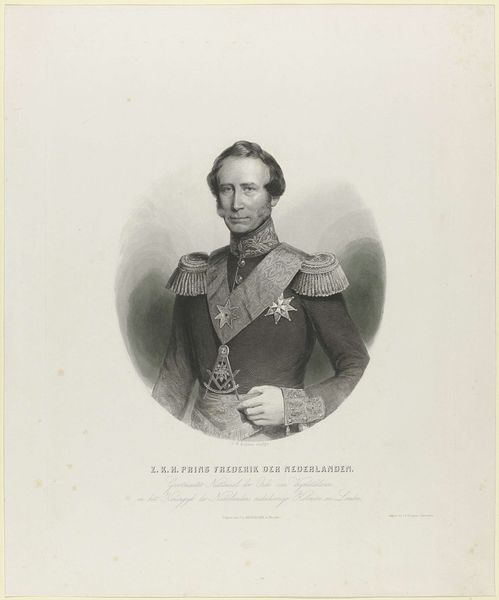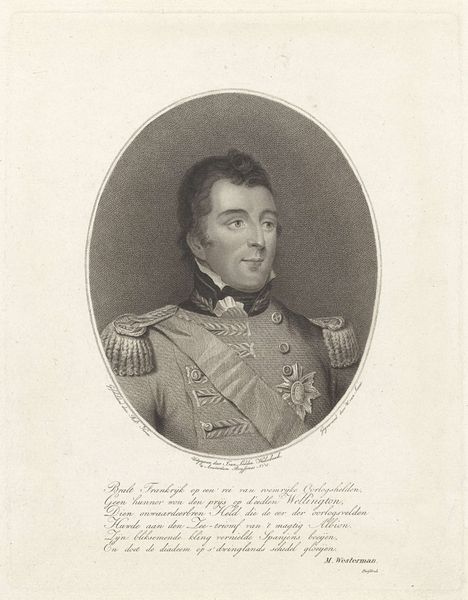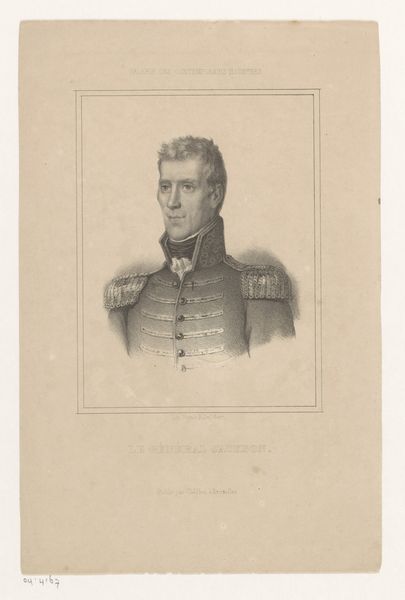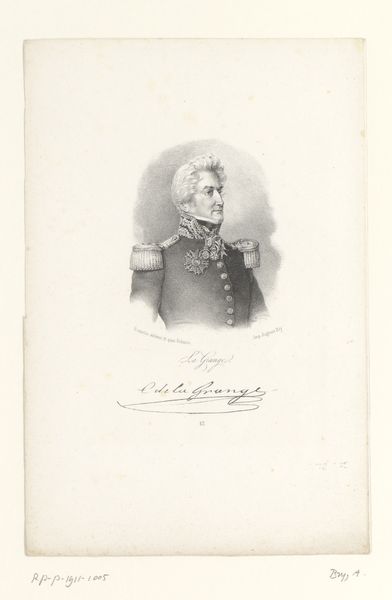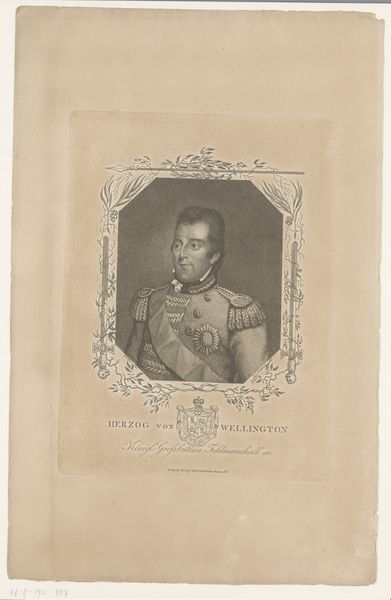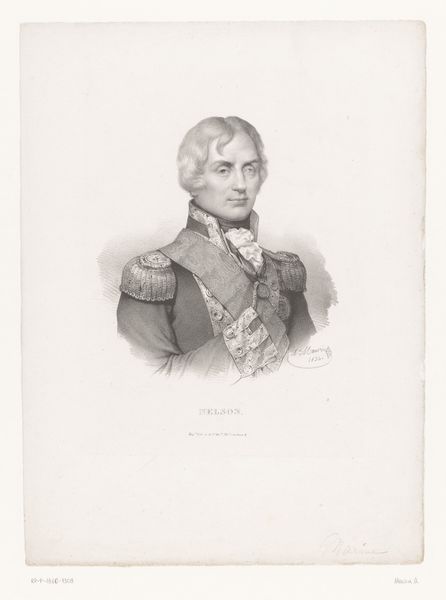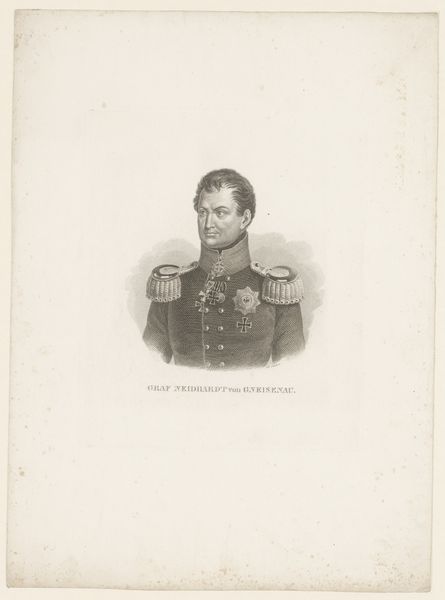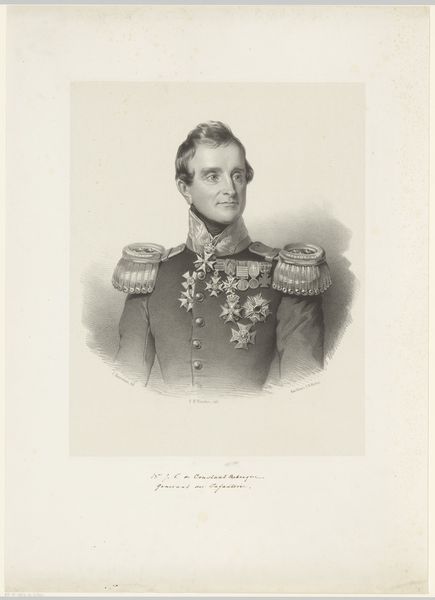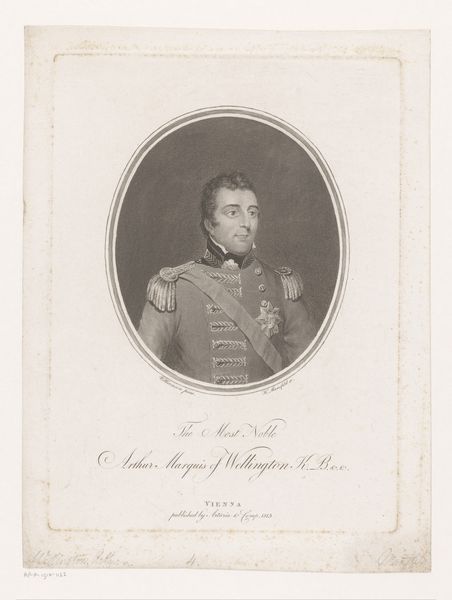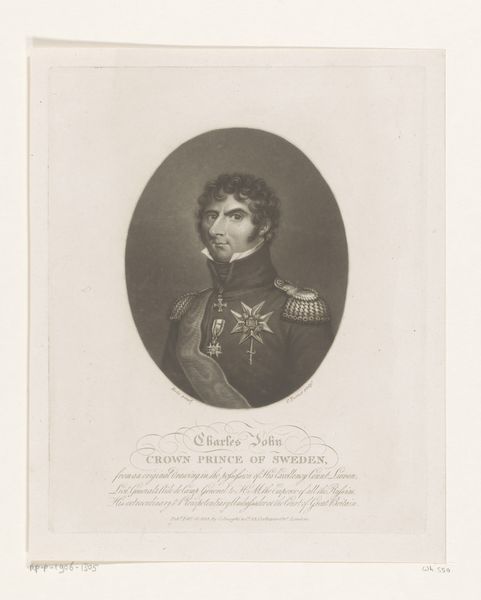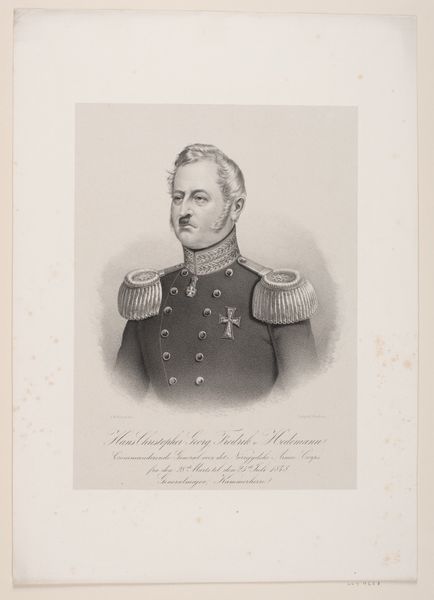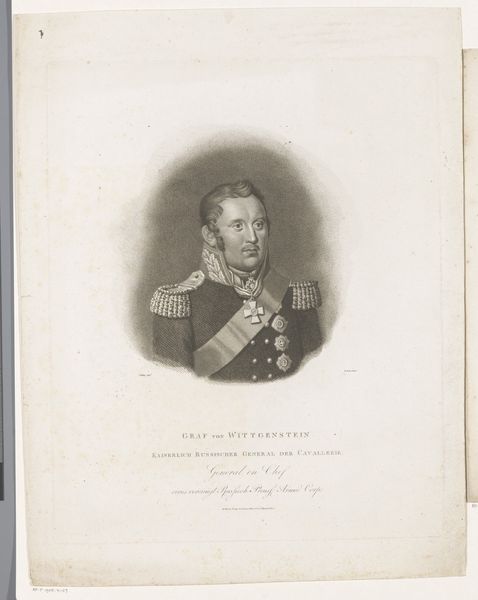
Portret van Arthur Wellesley, 1st Duke of Wellington 1804 - 1836
0:00
0:00
engraving
#
classical-realism
#
history-painting
#
academic-art
#
engraving
Dimensions: height 336 mm, width 280 mm
Copyright: Rijks Museum: Open Domain
Curator: Today, we're looking at Johann Friedrich Bolt's engraving, "Portret van Arthur Wellesley, 1st Duke of Wellington," created sometime between 1804 and 1836. Editor: My initial impression is one of calculated stoicism, and the light seems carefully employed to both elevate and subtly isolate the subject. It’s an imposing, though somewhat muted, work. Curator: Absolutely. Note the careful construction of the composition. Bolt masterfully uses the engraving technique to build a network of lines that define form and texture. The balance of light and shadow accentuates the precise details of Wellington's uniform, medals, and facial features. Every aspect serves the meticulous rendering characteristic of classical realism. Editor: The visual language is quite powerful here, embedding Wellington in a legacy. The uniform bristles with symbolism—rank, power, victory. It speaks volumes, recalling a specific period of empire and ambition. This imagery doesn't exist in a vacuum. Curator: Precisely, the density of visual information in his attire directs our gaze and understanding. Also notice how Bolt used a relatively constrained palette to maintain clarity and reinforce the composition's formality. The focus remains on line and tonal modulation. Editor: I'd argue the tonal constraint actually amplifies the underlying message. The monochromatic palette lends it a timelessness, elevating Wellington beyond a mere individual to an archetype of leadership—or, perhaps, imperial authority, depending on your viewpoint. It freezes him in a moment of controlled power, inviting the viewer to participate in that interpretation. Curator: I agree to an extent. The print successfully merges aesthetics and ideology, creating an object meant to not only commemorate but also monumentalize. Editor: A monumental piece, indeed, though perhaps laced with a subtle unease when viewed from a contemporary lens. Curator: Indeed. It’s a fascinating example of how visual language can be deployed to construct and perpetuate a particular historical narrative. Editor: The potency of symbols and their enduring influence are quite visible. It’s a fascinating glimpse into a very particular construction of power, wouldn’t you agree?
Comments
No comments
Be the first to comment and join the conversation on the ultimate creative platform.
